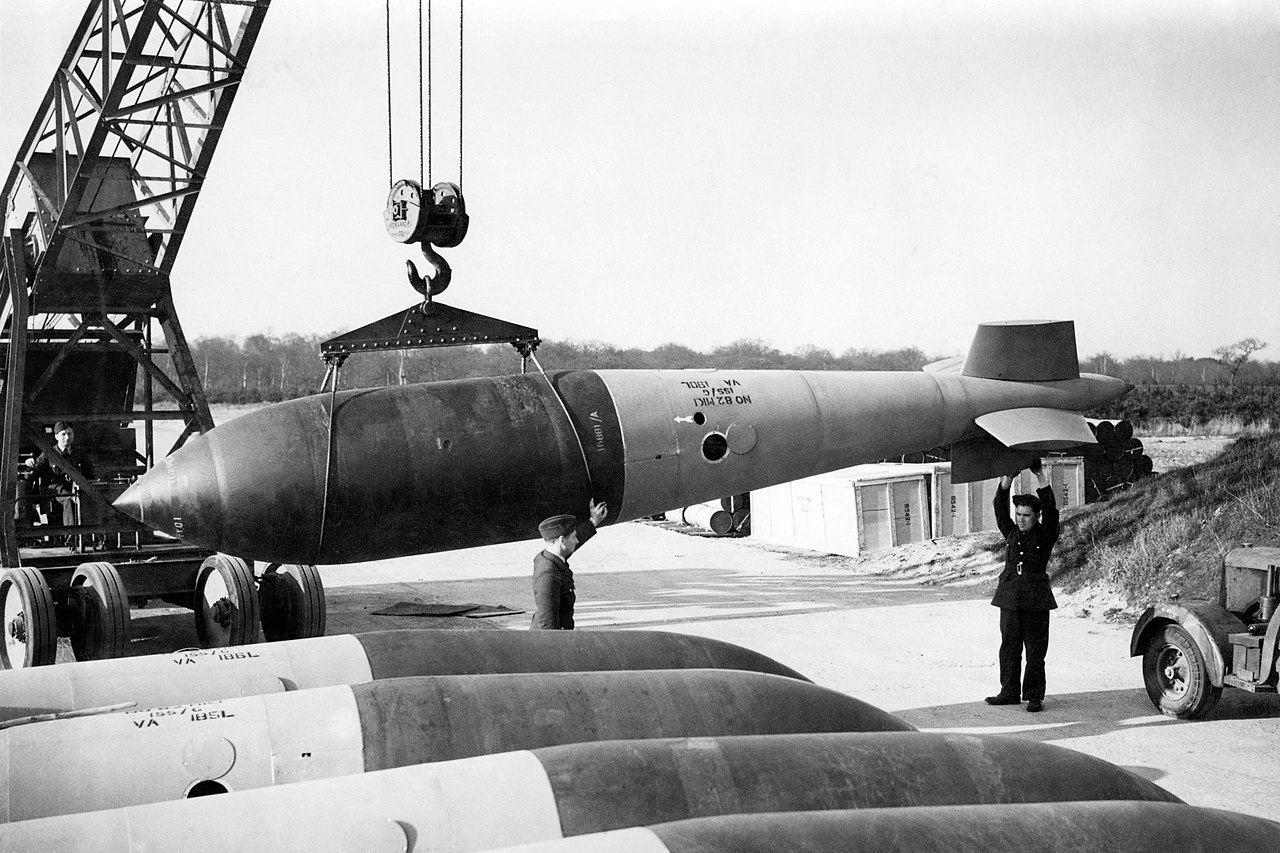During the war Allied bombs were designed to carry as much explosive filling as possible, to maximize the potential damage they could cause and the amount of explosive carried by each bomber. In order to do this, the shell of the bomb had to be much thinner to offset the added weight of the filling. This type of ordnance was great for general purpose work like destroying light defences and ordinary structures like factories and railyards.
When it came to destroying reinforced constructs, these bombs were much less affective. Their thin skins offered little penetrating power, and most of the blast would dissipate outwards away from the target.
This was especially problematic against German bunkers, which were renowned for their incredible durability and levels of protection. Some of these, like the submarine pens at Saint-Nazaire, were protected by an 8 meter thick steel reinforced concrete roof. Another complex in France named La Coupole was covered by a 55,000 ton concrete dome 5 meters thick.
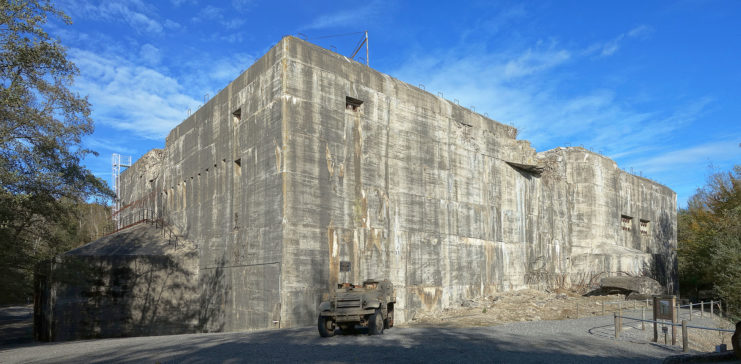
Conventional munitions simply had no chance against these fortifications. Luckily, British mad-scientist Barnes Wallis had a solution; to build an earthquake bomb of course!
Wallis suggested the idea in 1941, which originally consisted of a 10 ton bomb that was meant to slightly miss the target, burrowing its way deep into the earth and exploding after a short delay. The explosion of the device wasn’t meant to blow up the target like conventional bombs, but to rock its foundations, permanently damaging the structure beyond repair. Alternatively, a small cavern would be created, with the target falling into it and again damaging its foundations.
The entire concept relied on the fact that the earth transfers shockwaves much more efficiently than air.
From a distance, the work of an earthquake bomb on a structure may not seem as impressive as outright obliteration, but don’t let that mislead you from its effectiveness. A penetrating hit and subsequent explosion on a bunker will only damage the void it enters, allowing it to later be repaired and re-used.
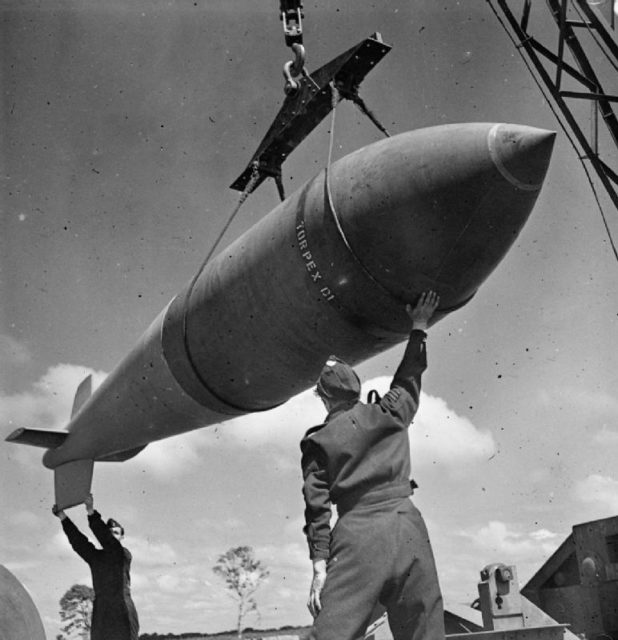
A bunker that has been damaged at its foundations will be permanently destroyed, as even a small degree of offset can misalign sensitive equipment, piping and weaken it entirely.
To actually carry this out, Wallis designed the Tallboy, a huge, sleek bomb weighing 12,000 lbs (6 tons).
The bomb was filled with 2.6 tons of Torpex, an explosive 50% more powerful than TNT and ideal for the task, as aluminium powder in the compound extended the expansion time of the explosion, giving it an advantage in generating a longer pulse to be transferred through the ground.
The filling was the easy part, though. It was getting that filling deep into the ground without disintegrating on impact that was the difficult bit. This was solved with a hardened, aerodynamic, high-tensile steel shell to contain the explosives. Behind this was a long tail topped with angled fins to spin the Tallboy as it fell, using the gyroscopic affect to improve its stability. Overall, the bomb was 6.4 m (21 ft) long.
The size and weight of the bomb meant it could only be carried by the Avro Lancaster heavy bomber, which still needed modifications to the bomb bay doors and removal of armor plating and defensive guns.
The bomb needed to reach immense speeds to penetrate deep into the soil or rock below, so it had to to be dropped from 18,000 ft. On its way down, the Tallboy would reach 750 mph, just shy of the sound barrier. After hitting the ground, multiple fuses guaranteed the Tallboys detonation, and could be set to explode 30 seconds or 30 minutes after impact. The resulting explosion was capable of leaving a crater 24 meters deep and 30 meters wide.
The precise engineering and handmade manufacture of the bomb meant it was expensive, and bomber crews were instructed to bring it home if it wasn’t used, instead of ditching it like other ordnance.
It was first used in June 1944 against the Saumur rail tunnel, where it successfully penetrated 18 meters of soil before exploding, completely blocking the tunnel. The massive Blockhaus d’Éperlecques bunker under construction near Pas-de-Calais was also attacked with Tallboys. The nearest landed almost 50 meters away, but still damaged the mostly-complete bunker so severely its construction was ceased.
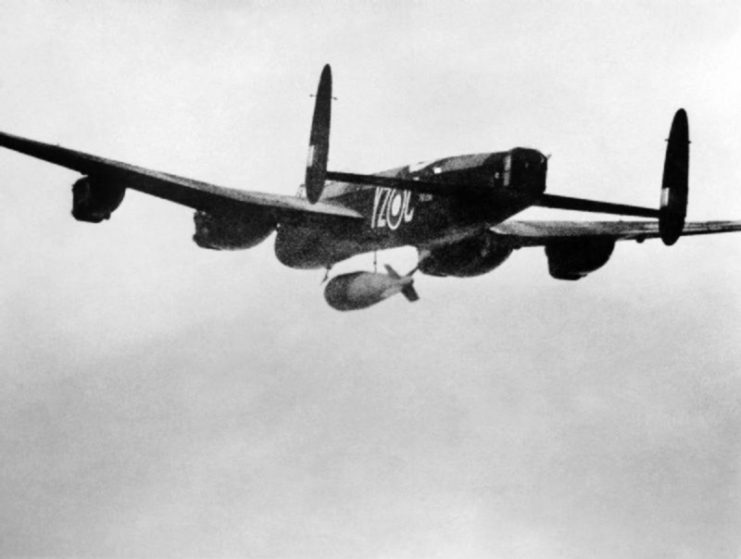
The La Coupole complex mentioned above was also put out of action by Tallboys. They were used on many occasions throughout the war, rarely meeting anything that could resist their tremendous power.
For anything that could, the RAF had the Tallboy’s bigger brother, the 22,000 lb Grand Slam bomb, nicknamed the Ten Ton Tess.
Work on the Grand Slam began in 1943 when it was realised the Lancaster was capable of carrying an even heavier bomb. They contained almost 5 tons of Torpex within their hardened chrome-molybdenum casings, and could destroy virtually any of Germany’s bunkers. The Lancaster carrying it had be significantly modified, and had a noticeable bend in its wings until it was released. After release, the aircraft would quickly rise 200-300 ft in the air.
Like the Tallboy, the Grand Slam would almost break the sound barrier on its way down, and penetrate deep into the earth before exploding. The Grand Slam was intended more for concrete penetration than the Tallboy.
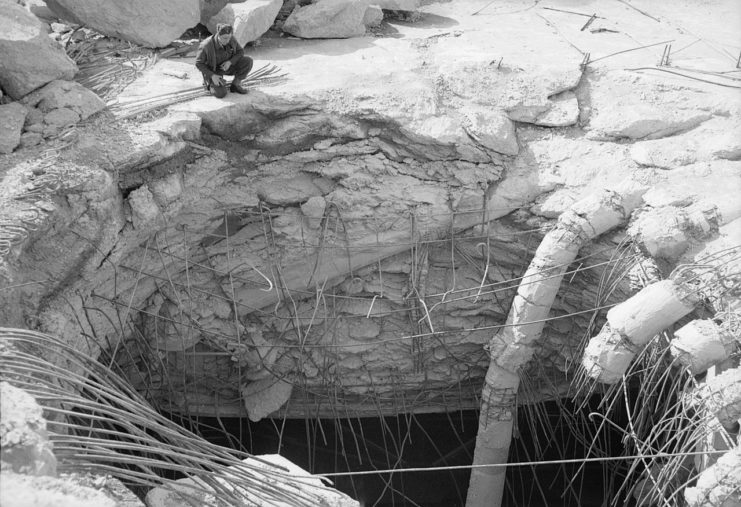
Due to its late arrival, the Grand Slam was used only 41 times. At the time the war ended, it was planned to begin using Grand Slams against German underground factories, which were usually built into solid rock.
The Tallboy continued life after the war as the T-10, later renamed to the M-121, a US built version that was planned to be used against tough defences on the Japanese mainland before their surrender. It was later used in the Korean war by B-29 bombers, remaining in production until 1955.
Another Article From Us: Bunkers of all Shapes and Sizes in 32 Images
The left over bombs were placed into storage, but were later used in the Vietnam war without their tails to clear large areas of jungle for landing helicopters. The last one was dropped by a C-130 in 1969.
